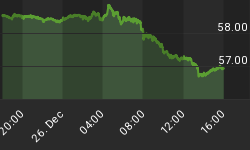| Merk Market Outlook provides the weekly perspective on the markets and the economy. Don't miss an Outlook: Sign up for our Newsletter The Archive: Read past Market Outlooks | |
Over the past few weeks many notable analysts have made the case that the economy is in the process of recovery. The market has celebrated the wonder of the "resilient consumer." Given the still fragile state of the economy we think that this is a bit overblown. A cold-eyed, hard-nosed analysis of the true condition of all things financial provides us with a very different assessment of the economy. But, with a major week of fundamental data and the onset of earnings season for financials upon us we thought it pertinent to put a few ideas to rest.
First, the credit crisis has yet to run its course. A genuine credit crisis is comprised of two components: a liquidity crisis and insolvency crises. With already $400.00 billion in global write offs within the financial sector alone one might be tempted to declare the credit crises over.
Yet, the problems on the balance sheets of financials will continue. Write-downs and the process of de-leveraging have yet to be finalized. We believe that there are $75-$100 billion in write downs left in the US alone before we reach a conclusion to the liquidity portion of the crises. This will continue to depress whatever appetite for risk taking in equity and credit markets remains. The Fed did not extend its primary dealer credit facility well into 2009 by accident.
Moreover, we have only begun to embark on the insolvency portion of the economic tragedy unfolding before our eyes. Too many market players are operating on the unspoken assumption that the fall of Bear Stearns and the near miss at Lehman have signaled that the end of the troubles are at hand.
Unfortunately, this is not the case. The crisis that has primarily engulfed Wall Street is beginning to spillover onto Main Street. Ford and GM will both be candidates for mergers, bankruptcies or bailouts in 2009. It is quite clear to anyone that care to look that Fannie Mae and Freddie Mac will have to be bailed out by the Federal Government. Pending legislation in Congress regarding the end of private fee for service, if it is enacted, will put at least one major player in the healthcare sector and one minor actor at serious risk of insolvency early next year. And do not forget the 200-250 small and regional banks that the Fed has warned us will eventually fail. Even such stalwarts as the gaming sector, which has been traditionally impervious to systemic economic slowdowns is going to see a spree of consolidations and perhaps a few insolvencies on the back of too much debt and a sharp reduction in demand from consumers who have seen their discretionary income evaporate.
Second, the consumer is no longer resilient but in fairly significant trouble. A well -timed and quickly implemented fiscal stimulus program is masking the true condition of the consumer. Pre-fiscal stimulus, the trend in real personal consumption was absolutely flat. Once the positive aspects of the stimulus withers away the prevailing trend in real consumption will reassert itself and we shall be back to where we were in the first quarter of the year.
The market has observed six consecutive months of contraction in non-farm payrolls. Growth in the once vibrant service sector has collapsed to near zero growth over the past three months. The major factors keeping the labor sector from collapsing appears to be the very questionable birth-death model at the Bureau of Labor Statistics and the aforementioned healthcare and hospitality sectors. Over the next few months the modeling at the BLS will catch up with reality and the healthcare/leisure sector will experience outsized contraction based on current economic conditions and trends. The decline in real income will put additional pressure on an already stressed consumer and set the stage for the final capitulation.
Finally, we will see a series of revisions to recent economic data, including GDP that may change current perceptions of the economy. We expect that the downward revisions will confirm that we are in a mild recession. More importantly, we anticipate that when we get to the final quarter of 2008 will see another downturn in economic activity.
Since 2007 my forecast for the economy has been "W" (no pun intended) shaped recession. We saw the first trough in late February and early March of 2008. We are currently at the middle apex of the "W" and expect to see growth begin to decline during the early portion of Q4'08. The final trough in our double dip scenario should occur in the second quarter of next year.
The sub trend 2.1% rate of growth that we expect to see in Q2'08 is a function of Washington priming the pump and the a vibrant external sector. Once the stimulus from the Federal government begins to fade and the impact of the searing increase in the cost of energy and commodities can be assessed on a domestic and global basis, the last vestige of support for the economy, net exports will fade to away and the US economy will see its first major recession since the early 1980's.
















